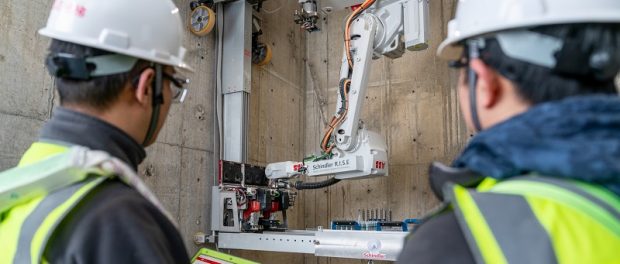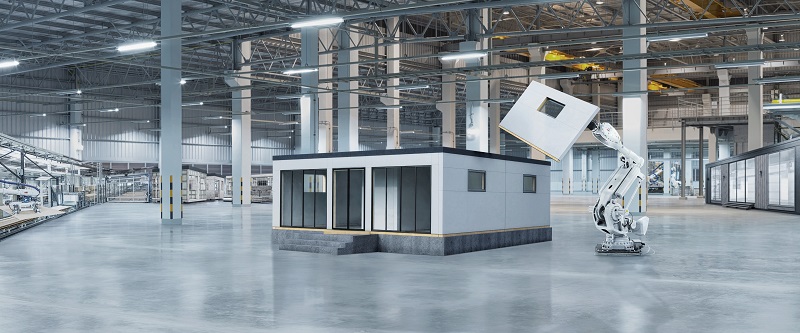Building the Future: Robots in Construction

As the world’s population continues to grow, there is an urgent need for thousands more buildings to be constructed every day to keep pace. Combined with a growing drive towards sustainability and a rising shortage of the people needed to build them, the need to build more homes more quickly is setting new challenges for construction companies. Anand Natarajan, Head of the General Industries Segment at ABB Robotics, looks at some of the key challenges facing the sector and explains how robotic automation could provide the solution.
The global construction sector is set to grow by 85 percent to reach $15.5 trillion worldwide by 2030, according to a recent report from Global Construction Perspectives and Oxford Economics. Yet, for a sector with such a positive outlook, the industry faces considerable head winds.
There is a strong need to improve productivity and efficiency, combined with external pressures from megatrends such as urbanization, labour shortages, changing consumer demands and the drive for decarbonization. All this is creating a ‘perfect storm’ of conditions that are leading a growing number of construction companies to look for new alternatives to established practices.
Automation has already made a huge difference to productivity in other sectors, such as automotive manufacturing. However, the construction industry has remained comparatively untouched. One key reason for the lack of innovation has been the complex, largely outdoors nature of construction work. Most construction takes place on the site that the building will occupy. In addition, it often involves assembling bespoke structures from a diverse range of component parts and materials. These factors tend to constrain the use of production methods and economies of scale that have long been the norm in manufacturing sectors where production takes place in a more manageable, factory environment.
One key reason for the lack of innovation has been the complex, largely outdoors nature of construction work. Most construction takes place on the site that the building will occupy. In addition, it often involves assembling bespoke structures from a diverse range of component parts and materials. These factors tend to constrain the use of production methods and economies of scale that have long been the norm in manufacturing sectors where production takes place in a more manageable, factory environment.
Construction is not alone in facing these challenges. Other traditional sectors such as agriculture are experiencing similar pressures to change, as well as similar barriers to automation, such as an uncontrolled, outdoor environment and a relatively unpredictable variety of non-standard tasks and applications.
As a result, productivity and efficiency have advanced significantly in some industries, while remaining largely static in other sectors, including construction.
The consequences are clear to see. Advances in productivity have seen the automotive industry advance to a position where labour accounts for just 9 percent of the per unit price that can be charged for a vehicle. In contrast, the figure for the construction industry hovers stubbornly at around 50 percent.
This is leaving the construction sector struggling to keep pace with demand. In the United States, labour shortages are already contributing to a housing shortfall of nearly four million homes, while Germany is forecast to have housing supply shortages in 35 of its cities by 2030.
Construction may have been slow to embrace new technologies until recently, but that is finally changing thanks to new developments in robotic automation.
Robots are paving the way for transformative techniques such as modular construction and 3D printing, which provide fresh answers to perennial construction challenges such as customer choice/customization, speed of delivery/reducing project times, sustainability/waste reduction and health and safety.
Crucially, automation can also help address skills shortages by augmenting the capabilities of existing workers.

